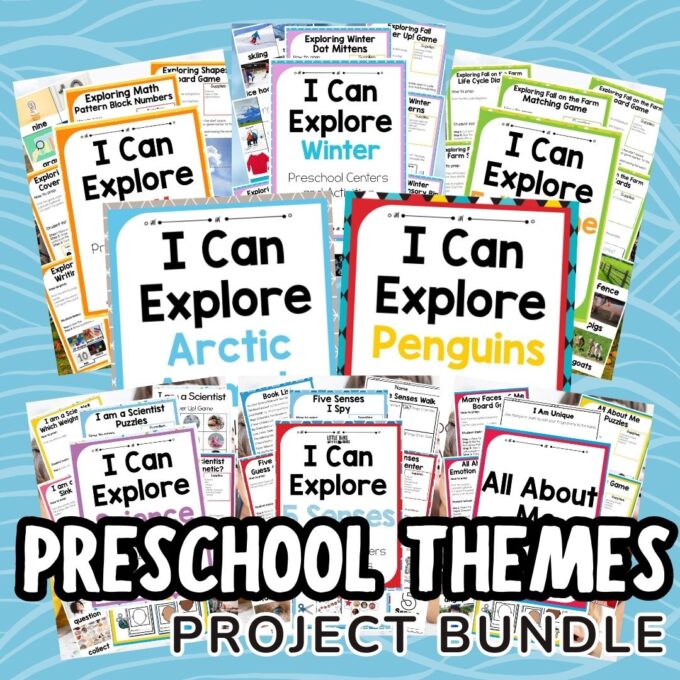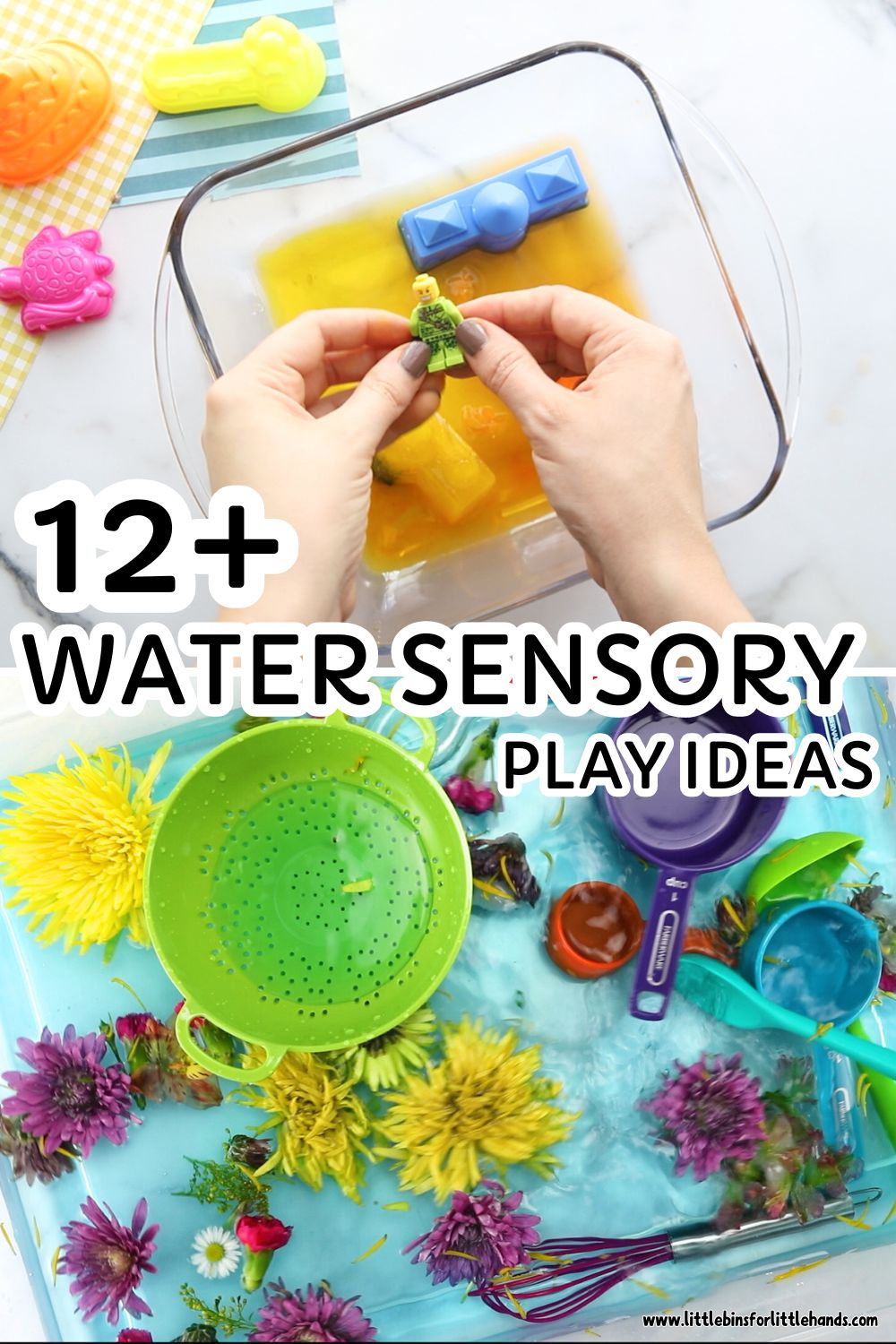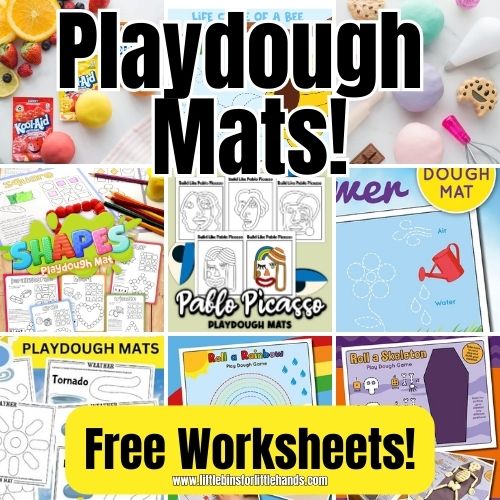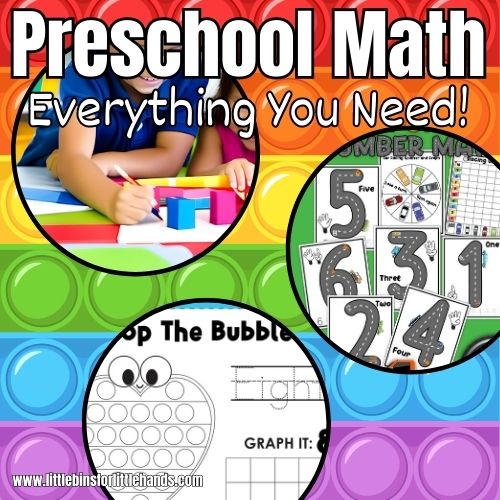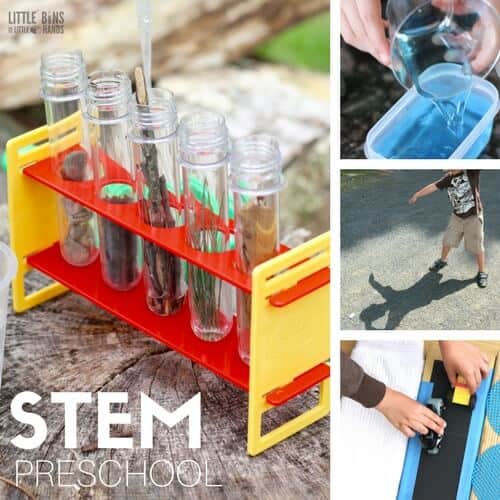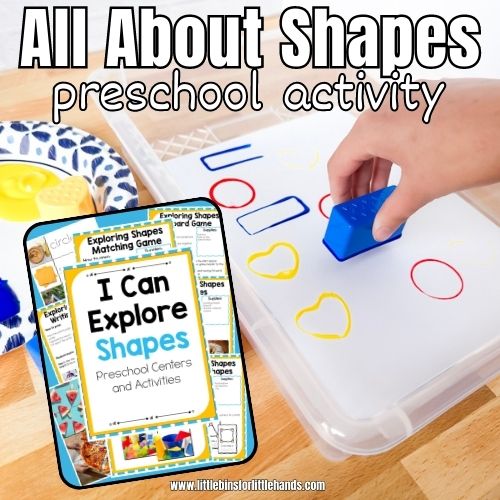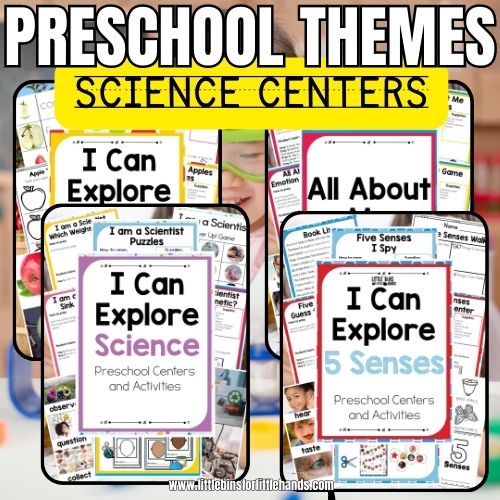Water sensory play is a fantastic way to engage toddlers and preschoolers in sensory activities while providing them with opportunities for learning and exploration. These sensory bins offer a hands-on experience that will stimulate the senses and encourage imaginative play. We’ll delve into what water sensory bins are, how to make them, and give you 12 easy-to-set-up themes for toddlers and preschoolers.
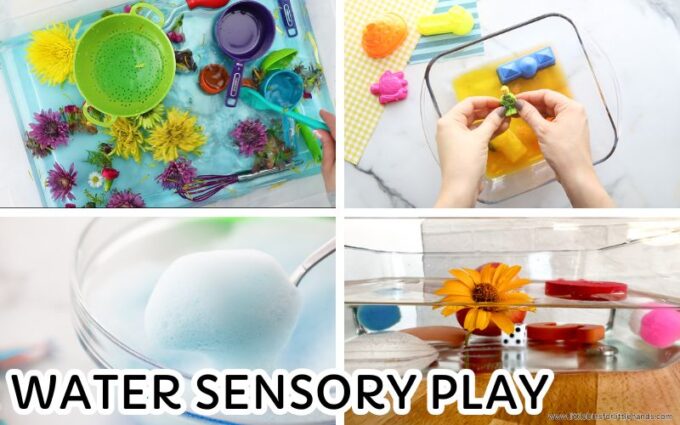
What Is Water Sensory Play?
Water sensory play using a water sensory bin involves providing a container filled with water and incorporating various materials or objects to enhance the sensory experience for toddlers and preschoolers.
They are designed to provide sensory experiences through touch, sight, and sometimes even sound and smell. These sensory bins or tables can be as simple or elaborate as you like, depending on the age and interests of the child. Remember, the don’t have to be Pinterest worthy to be fun!
A water sensory bin can be set up indoors and outdoors, allowing children to explore, manipulate, and engage with water in a controlled and contained environment.
Watch the Video:
How to Make A Water Sensory Bin
Creating a water sensory bin is easy and requires only a few basic materials:
Tip: If it’s a nice day, take it outside! Have you got a plastic outdoor water table? Use it and even bring it indoors. If you can’t go outside, grab a dollar-store shower curtain to put underneath it inside.
Tip: Pick a larger plastic tub for water play than you would for a dry sensory bin filler, if possible.
STEP 1: Choose a large plastic tub or bin that is shallow enough for young children to reach into comfortably but has deep enough sides to hold enough water. Consider the height of the table the kids are standing around.
STEP 2: Fill the container with water to an appropriate depth for your child’s age and supervision level. Ensure the temperature is not too hot or cold for comfortable, lasting play. Add a few drops of food coloring to complement a theme if desired.
STEP 3: Add toys, scoops, cups, funnels, sponges, and other safe objects for water play.
Optional Additions: You can enhance the sensory experience by incorporating food coloring, bubbles, or scented oils.
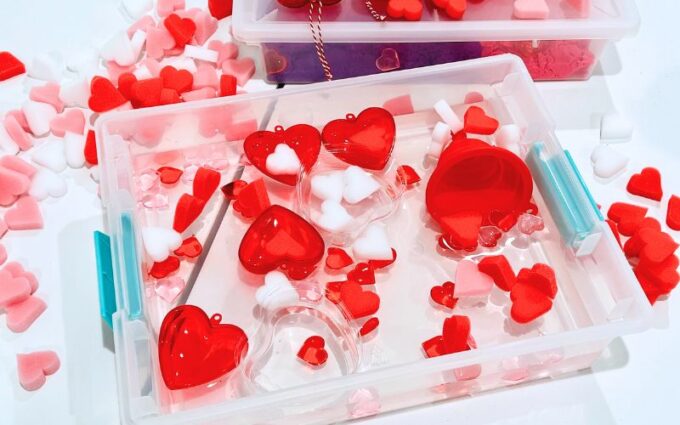
TIP: Water sensory bins can have a unique theme to coordinate with a learning unit or science center, or be super simple without a theme. Check out the sensory play ideas below and see how you can change them up to match your theme.
Easy-to-Set-Up Water Sensory Bin Ideas
Ocean Adventure
Fill the bin with blue-tinted water and add plastic sea creatures, shells, and rocks for a marine-themed exploration. Items for aquariums also work well. Add aquarium gravel for an additional texture.
TRY IT: Icy Ocean Sensory Play (this does not have to start frozen)
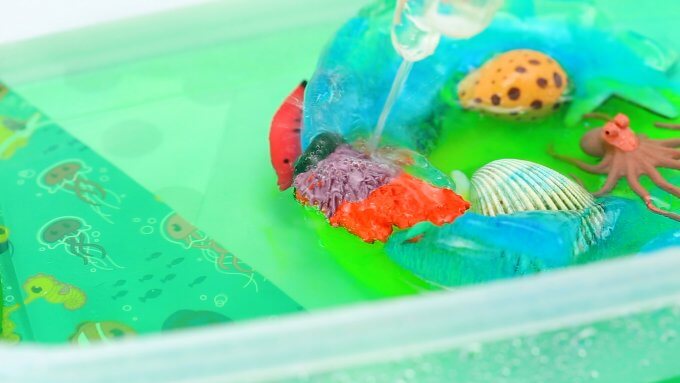
Splash and Pour
Provide cups, bowls, funnels, and various containers for pouring and scooping water. This is simple but my favorite.
Bath Time Fun
Use bath toys like rubber ducks, boats, and sponges to recreate a bath time experience. Add in some homemade non-toxic bath paint for even more fun!
Play Soup
Make “soup!” Fill a bin with water and fun items for a theme: spoons, measuring cups, and bowls.
TRY IT: Apple sensory bin
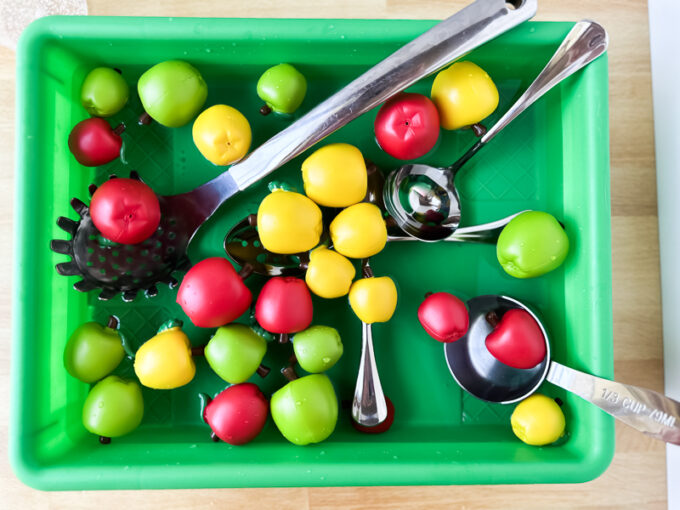
Frozen Sensations
Freeze small toys or objects in ice cubes for a chilly sensory experience that also encourages fine motor skills as children work to free the items. Dinosaurs, matchbox cars, LEGO cars, acrylic gems and jewels, pirate gold coins, or space theme items!
Find all sorts of themes for Ice Play Activities all year round.
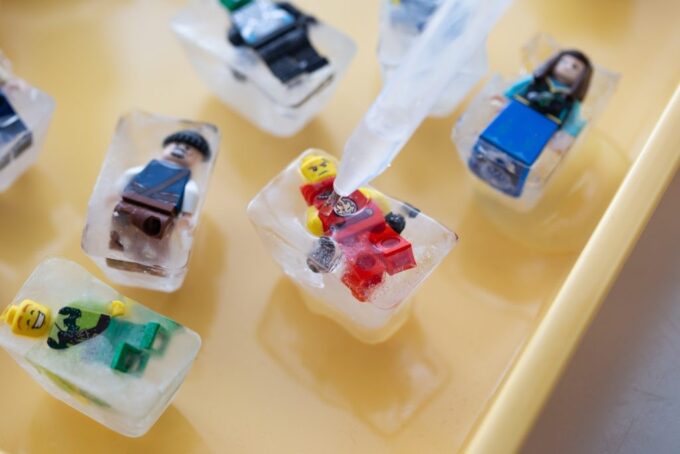
Garden Water Play
Transform your sensory bin into a miniature garden by adding water, fake flowers, and toy insects. Include small watering cans and buckets for pretend play.
Real Flower Water Play
Add real flowers to your water sensory bin along with tongs, kid-friendly tweezers, scissors, colanders, scoops, and a magnifying glass.
TRY IT: Icy Flower Melt
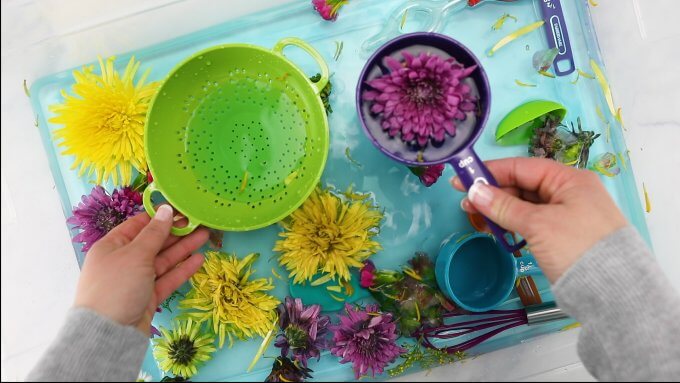
Arctic Adventure
Create an Arctic-themed sensory bin by filling it with icy water and adding plastic Arctic animals. Include faux icebergs made from Styrofoam for an added sensory element.
TRY IT: Arctic Sensory Bin
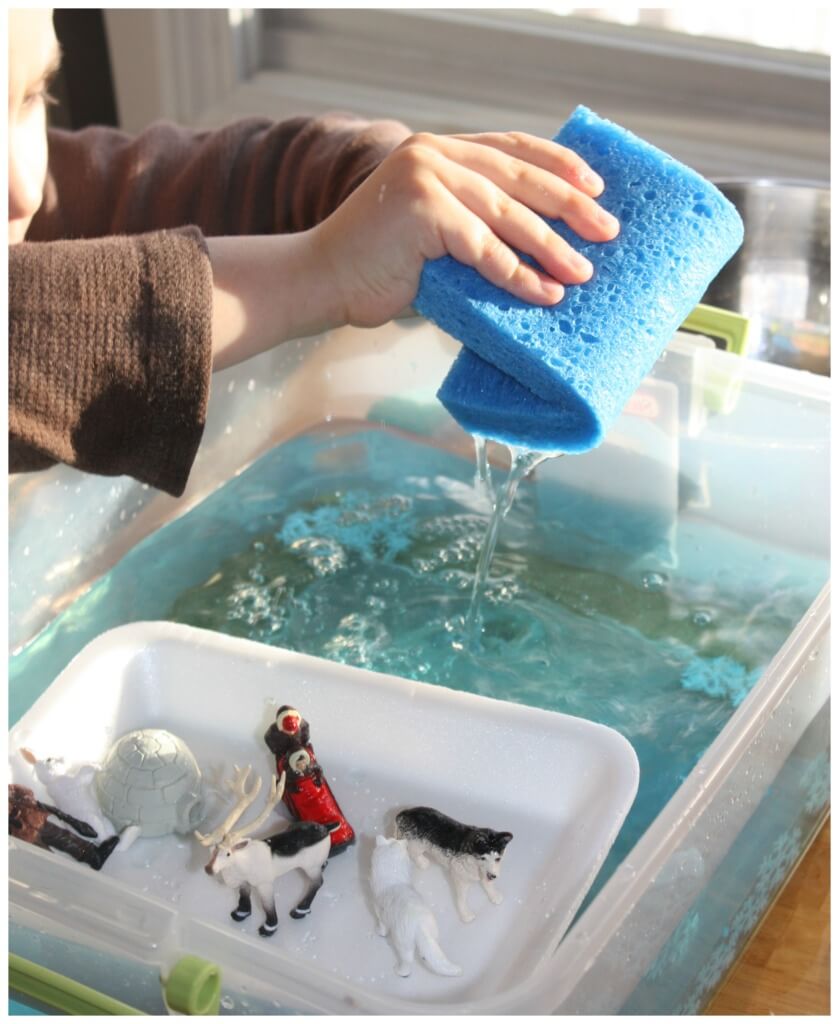
Fishing Fun
Use magnetic fishing rods and plastic fish for a fishing-themed sensory bin (check out aquarium items). Or use magnet wands and discs. Perfect for a magnet theme unit or center!
Floating Alphabet Soup
Fill a bin with water and add foam letters (and/or numbers). Children can fish out the letters with aquarium nets. Add soapy water for an extra element. Fantastic for practicing letter recognition (or numbers).
TRY IT: Letter Sounds Ice Play
Bubble Bonanza
Fill the sensory bin with bubbly water using a bubble machine or dish soap. Provide various tools such as wands, straws, and sieves for children to create bubbles of different sizes.
TRY IT: Make soap foam!

Beach Day Fun
Recreate a day at the beach by filling the sensory bin with water and adding sand, seashells, beach toys, and miniature umbrellas. Children can build sandcastles, search for seashells, and splash in the water, fostering imaginative play and sensory exploration.
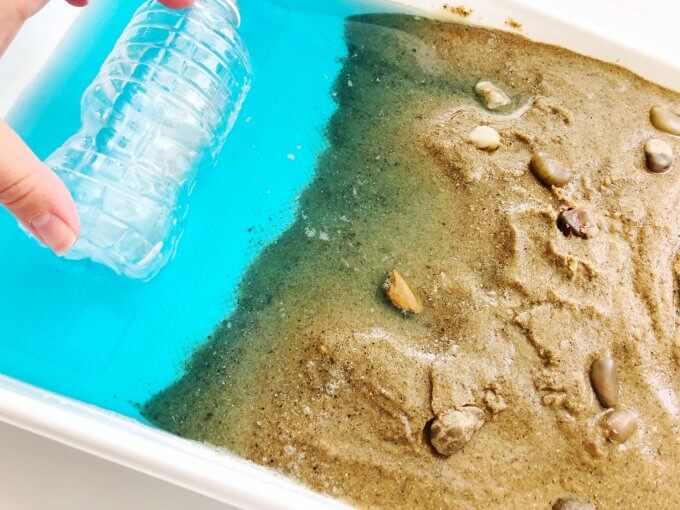
Sink or Float Exploration
Fill the sensory bin with water and provide a variety of objects for children to explore. Before testing it in the water, encourage kids to predict whether each object will sink or float. This activity promotes scientific inquiry and critical thinking skills.
TRY IT: Sink or Float Experiment
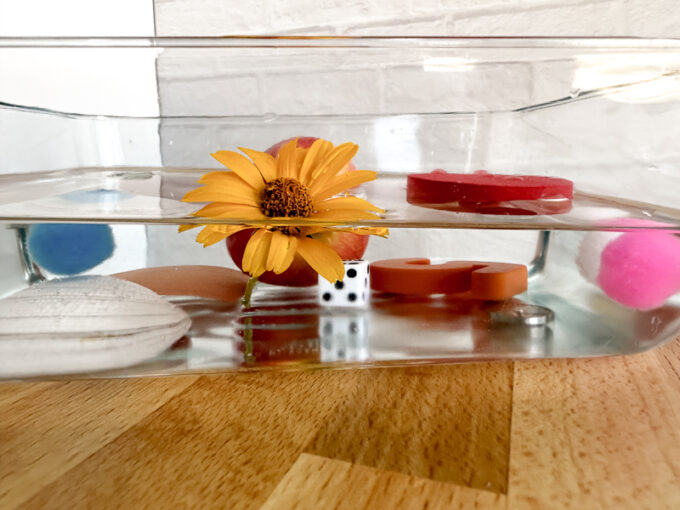
Car Wash Sensory Bin
Set up a miniature car wash station in the sensory bin. Provide toy cars, sponges, scrub brushes, and a spray bottle filled with water for children to wash and rinse their vehicles.
Animal Washing Station
Create a pretend animal washing station with plastic animals, toy brushes, and sponges. Invite children to wash and groom the animals, discussing the importance of caring for living creatures.
TRY IT: Animal Washing Sensory Bin
NOTE: With endless possibilities for themes and variations, water sensory bins are a favorite activity for kids, teachers, and caregivers alike. So, grab a bin, fill it with water, and dive into the wonderful world of sensory play!
Benefits of Using Water Sensory Bins
Water sensory bins offer a wide range of benefits for toddlers and preschoolers. However, not every sensory bin has to have an academic lesson included with it.
The art of independent, free play is a fundamental lesson to incorporate into a toddler or preschooler day.
Sensory Development: Water play stimulates the senses, including touch, sight, and sometimes sound and smell.
Fine Motor Skills: Pouring, scooping, and manipulating objects in the water helps children develop fine motor skills and hand-eye coordination.
Cognitive Development: Water sensory bins encourage problem-solving and experimentation as children explore the properties of water and various materials.
Language Development: Water play provides opportunities for vocabulary development as children describe their experiences and interact with others.
Social Skills: Sharing and taking turns with materials in the sensory bin promotes social skills and cooperation.
Creativity and Imagination: Water sensory bins spark imaginative play as children create stories and scenarios with the materials provided.
Emotional Regulation: Water play can be calming and soothing for kids, helping them regulate their emotions and reduce stress.
Science Exploration: Children learn about concepts like buoyancy, density, and volume through hands-on exploration in the water.
Fun and Enjoyment: Most importantly, water sensory bins provide children with hours of fun and enjoyment as they engage in open-ended play and exploration.

Learn More About Sensory Play
There are many fantastic ways to set up sensor play activities and experiences, from bins to bottles to messy play. Browse the links below to learn more about sensory bins and play experiences.
- How to Make Sensory Bins
- Messy Sensory Recipes
- Non-Food Sensory Bins
- Rice Sensory Bins
- Sensory Play Activities
- All About Sensory Bins
- Homemade Playdough Recipes
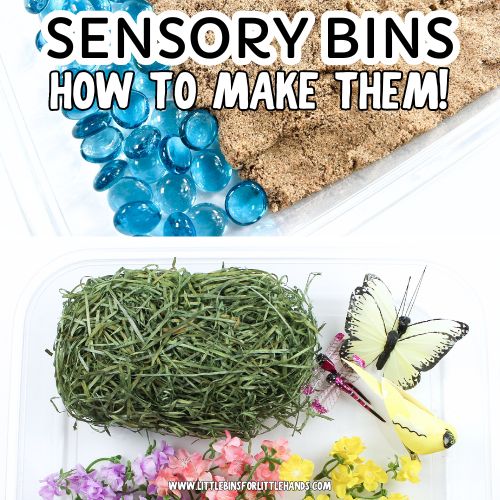
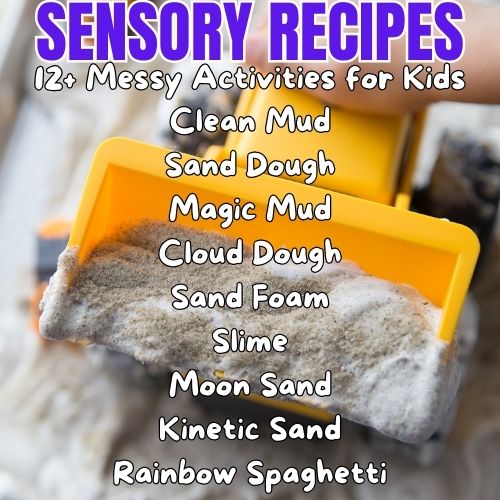
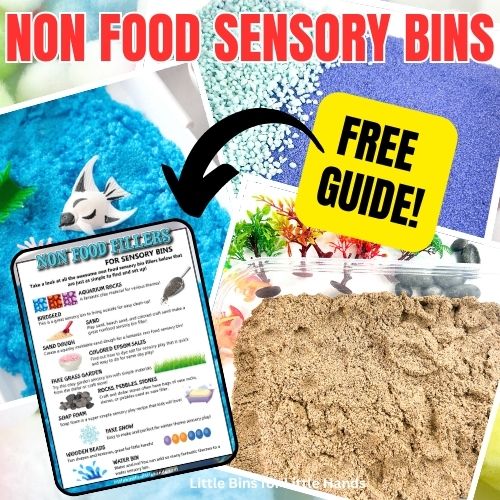

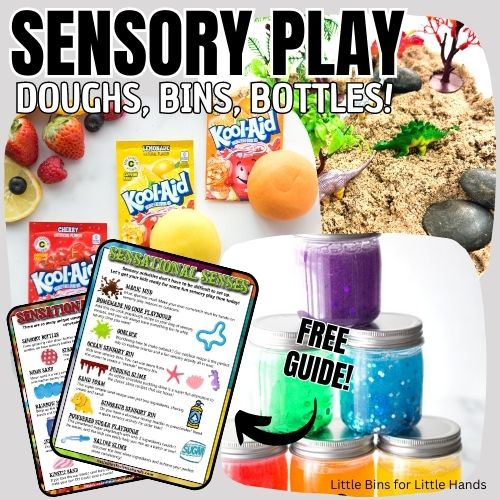

Printable Preschool Pack
Get ready to explore this year with our growing Preschool STEM Bundle!
What’s Included:
There are 12 preschool themes to get you started. This is an ” I can explore” series!
Each unit contains approximately 15 activities, with instructions and templates as needed. Hands-on activities are provided to keep it fun and exciting. This includes sensory bins, experiments, games, and more! Easy supplies keep it low cost and book suggestions add to the learning time.
